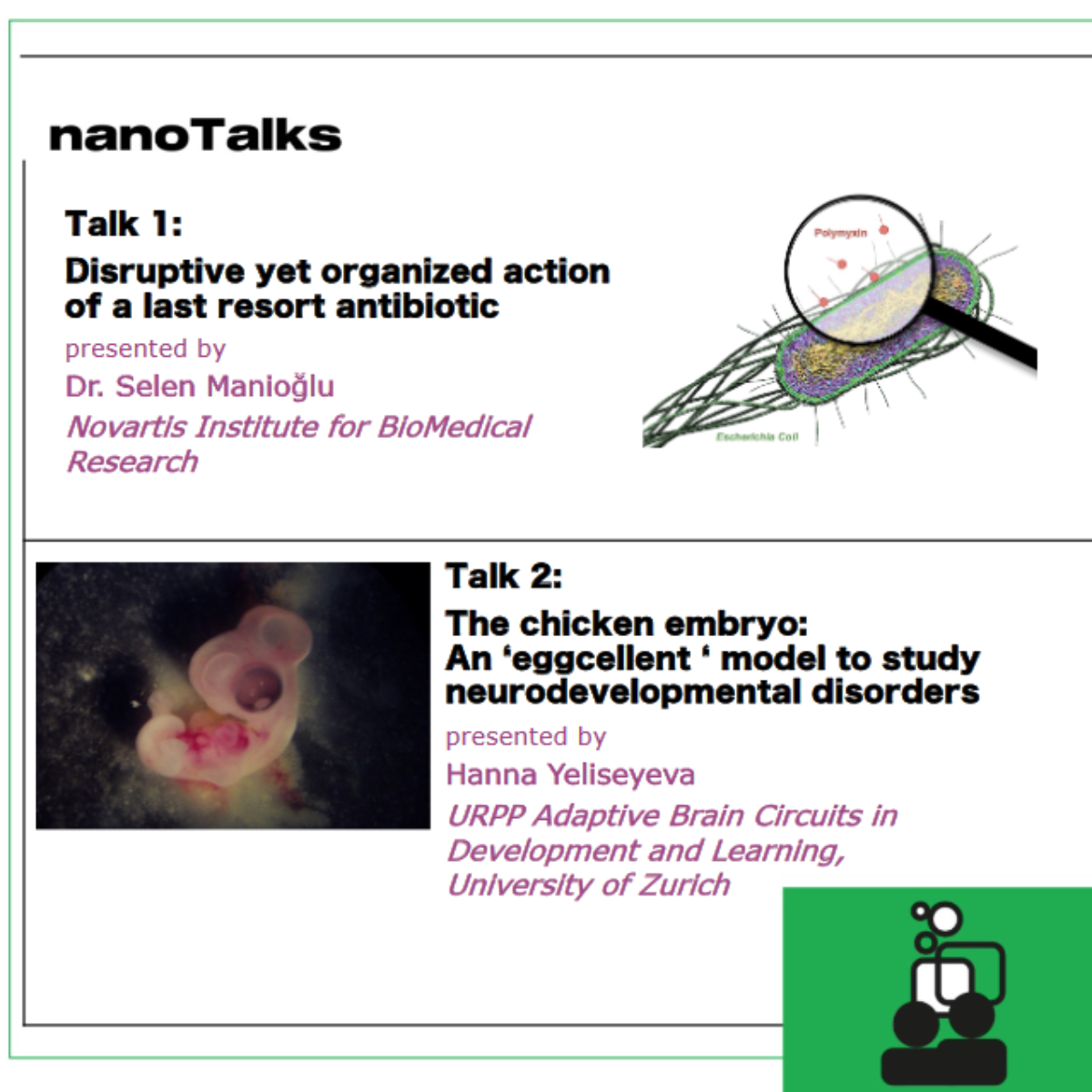
March nanoTalks: Life Science Zurich
March nanoTalks are dedicated to Life Science Zurich. In the first talk, Selen Manioglu will talk about Polymyxins, a class of so-called last-resort antibiotics. In the second talk, Hanna Yeliseyeva presents an "eggcelent" model to study neurodevelopmental disorders.

max. 40 participants
Talk 1: Disruptive yet organized action of a last resort antibiotic
Presented by Selen Manioglu, Novartis Institutes for BioMedical Research (NIBR)
Antibiotic resistance is a growing threat to global health, and our antibiotic arsenal against multi-drug-resistant (MDR) bacteria has been defused immensely over the last 30 years. Polymyxins, a member of last-resort antibiotics, are still effective against these MDR pathogens. Although it has been in clinics since the late 1940s, the mechanistic details of polymyxin's action on the bacterial membrane were unclear.
In this NanoTalk, I will discuss the recent findings from a particular imaging technique we used to study the action mechanism of polymyxins. Our results demonstrated that polymyxins bind to membrane lipids, and these newly formed crystalline structures weaken the membrane until it bursts.
Talk 2: The chicken embryo: An ‘eggcellent’ model to study neurodevelopmental disorders
Presented by Hanna Yeliseyeva, PhD at the Department of Molecular Life Sciences, URPP Adaptive Brain Circuits in Development and Learning, University of Zurich
Autism spectrum disorder (ASD) is a group of neurodevelopmental disorders that affect a child's nervous system, growth and development. Different candidate genes appear to be involved in the etiology of ASD. For example, there is evidence that mutations in FoxP genes, encoding transcription factors, could cause changes in both central (CNS) and peripheral nervous system (PNS) development, thus impairing cognition, speech and motor abilities. Therefore, to investigate and characterize distinct molecular mechanisms how FoxP genes orchestrate neural circuit formation in a suitable animal model, such as a chicken embryo, will be an important future direction for the field. Chicken embryos have been actively used to investigate neurodevelopmental processes because of their accessibility during development and thus the possibility for gene manipulations in a precisely timed manner. Envisioned results of the project would provide us with a better understanding of how prenatal misregulations in FoxP-driven neurodevelopmental processes cause ASD.
